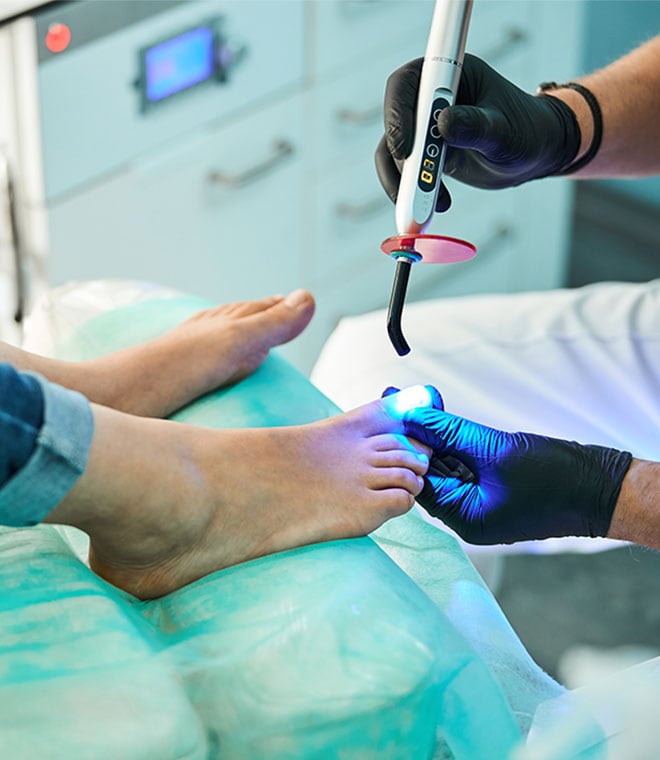Health
Is toenail fungus painful?
By Anna H. Chacon, MD, Fellow of the American Academy of Dermatology Oct 22, 2024 • 4 min
Toenail fungus doesn’t typically cause pain. However, in some cases, a severe fungal infection may become painful. As the fungus grows and the toenail thickens and turns brittle, the nail may lift off the nail bed, which can cause pain, especially when you’re wearing shoes. Additionally, the jagged edges of a thickening toenail can cause pain when you’re wearing closed shoes, making it difficult to walk.
People who have diabetes or a weakened immune system have an increased risk of developing a bacterial infection of the skin surrounding the affected toenail. This infection can be painful and can lead to more serious complications. You should see your healthcare provider if you develop a toenail fungus, especially if you have a chronic health condition.
Is toenail fungus treatment painful?
The best treatment for toenail fungus is an oral antifungal medication available by prescription only. Although some home remedies and over-the-counter medications may help symptoms or reduce growth of a mild toenail fungus, these don’t typically work for more widespread or severe fungal infections. Over-the-counter or prescription medications don’t typically cause pain, although some topical home remedies may cause irritation of the skin surrounding the infected toenail.
Some severe fungal infections of the toenail may not respond to prescribed or over-the-counter medication, and your dermatologist may recommend removal of the toenail entirely.
Nonsurgical toenail removal, known as debridement, is performed in-office by a healthcare provider. The process may need to be repeated several times until the infected part of the toenail is gone. Nonsurgical toenail removal isn’t typically painful, but it may be uncomfortable during the scraping process and tender for a while afterward.
Surgical toenail removal, known as avulsion, is typically painless during the in-office medical procedure because a topical anesthetic is applied beforehand. Avulsion usually involves removing all or a portion of the nail plate from the nail bed. Once the anesthesia wears off, you may experience mild to moderate pain, which you can manage with over-the-counter pain relievers. Proper wound care is essential after toenail removal to ensure the area doesn’t become infected. After a couple of days, the pain should begin to subside.
While toenail fungus is typically painless and harmless, it can be more severe for people with a chronic disease or a weakened immune system. It’s important to visit your healthcare provider right away if you have health issues and notice an infection starting on your toenail.
Getting rid of fungal toenail infections is notoriously difficult. Most people want to treat nail fungus because of its appearance, and treatment is a wise choice, since the infection can worsen and spread. If you choose to try an over-the-counter medication and the infection doesn’t improve the infection after several months, you should visit your healthcare provider to discuss other treatment options. They may recommend an oral antifungal medication or surgical removal.
Updated by Julie McDaniel, MSN, RN, CRNI, October 2024.
Sources:
- https://www.cdc.gov/fungal/nail-infections.html
- https://www.ncbi.nlm.nih.gov/books/NBK279547/
- https://www.aad.org/public/diseases/a-z/nail-fungus-treatment
- https://www.aad.org/public/diseases/a-z/nail-fungus-symptoms
- https://www.uptodate.com/contents/onychomycosis-management
- https://www.uptodate.com/contents/nail-avulsion-and-chemical-matricectomy



